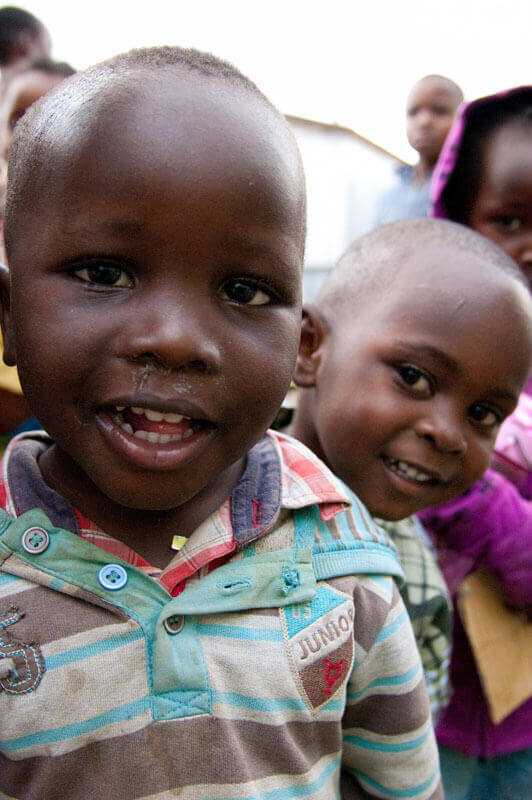Tomorrow US policymakers and global health advocates will come together to talk progress made on preventing maternal and child deaths. During the day,
the US Agency for International Development (USAID) will host a high-level forum called Acting on the Call: Ending Preventable Child and Maternal Deaths to both celebrate progress and assess the challenges that remain. That evening, the 5th Birthday and Beyond coalition will celebrate America’s leadership
and investments worldwide to help children reach their fifth birthday.

- US investment in R&D has led to new innovations that are saving the lives of mothers and children. Photo: PATH/Teresa Guillien
While you’ll probably hear a lot of different facts and figures, one message will be clear—the world has made remarkable progress in preventing the
deaths of millions of women and children. In fact, maternal and child deaths have been cut in half in just over two decades. That means that every
day this year, 17,000 more children will live and 700 more mothers will survive childbirth than did two decades ago.
Central to this progress has been US investment in research and development (R&D) that has led to new medicines and innovative health products that
are saving the lives of mothers and children. Globally new vaccines, drugs, diagnostics, and other health innovations have led to 4.2 million fewer
child deaths in 2013 compared to 1990, according to a report by the Institute for Health Metrics and Evaluation.
Innovations like the polio vaccine, oral rehydration solution to treat diarrhea, and antiretroviral therapies that prevent maternal to child HIV transfer,
and others treatments have resulted in incredible gains for maternal and child health.
No country has done more than the United States to help save the lives of the world’s poorest mothers and children. A critical part of the US approach
has been our world-leading investment in global health R&D.
In fact, the US government is the largest funder of global heath R&D in the world—contributing over 45 percent of total investment.
US government investment in global health R&D has led to breakthroughs that have transformed or are poised to transform efforts to reduce maternal
and child mortality. Some examples include:
The Oxytocin-Uniject™
This is a device filled with oxytocin that helps contract the uterus to reduce post-partum hemorrhage—or excessive bleeding—the leading
cause of maternal death worldwide. It is easy to inject and requires little training to administer, so it’s made a dramatic difference in the ability
of health workers to administer oxytocin in emergencies or in remote locations outside of traditional hospital facilities. USAID played a crucial
role in funding research towards the development of this product.
RTS,S malaria vaccine candidate
RTS,S is the most clinically-advanced vaccine candidate for malaria—a disease which kills a child every 40 seconds. A recent study showed that
infants who receive the RTS, S vaccine had one third fewer cases of both clinical and severe malaria. A vaccine could be an important tool in reducing
child sickness and death from malaria. The Department of Defense provided critical funding for the early development and clinical testing of RTS,S.
Rotavirus vaccines
Rotavirus-induced diarrheal disease kills roughly 435,000 children younger than five each year. Two currently available rotavirus vaccines were introduced
in the past two decades, with other vaccines under development showing
tremendous progress. The National Institutes of Health developed
the first available rotavirus vaccine and has been a financial partner in the development of subsequent vaccines. In addition, the Centers for
Disease Control and Prevention also monitors efficacy and safety, and supports clinical trials of rotavirus vaccines.
New contraceptive technologies
Family planning technologies allow women to space their pregnancies—making it more likely for both the mother and child to survive childbirth.
An analysis of 172 countries found that family planning prevented 272,000 maternal deaths in just one year. However, the contraceptive options
that exist today don’t always meet the needs of women in developing countries. New vaginal rings are being developed that will be long-lasting and easy for the user to insert and remove without a doctor’s assistance, while new multipurpose prevention technologies combine the delivery of contraceptives with microbicides which reduce the transmission of HIV and other sexually transmitted infections. USAID
provides funding towards the development of many of these new contraceptive technologies.
While tremendous progress has been made in decreasing maternal and child deaths worldwide thanks in part to new health innovations, each year 6.6 million
children still die before their first birthday and 289,000 women still die from pregnancy-related causes. That translates to 18,000 children under
the age of five and 800 pregnant women or women in childbirth dying every single day. The United States can and must do more.
While the United States should increase access to proven and existing drugs, vaccines, and other health tools for maternal and child health, it is just
as critical to develop the next generation of tools to prevent and treat existing and emerging diseases. Sustained and continued investment by the
US government in global health R&D is critical to ending maternal and child deaths.

